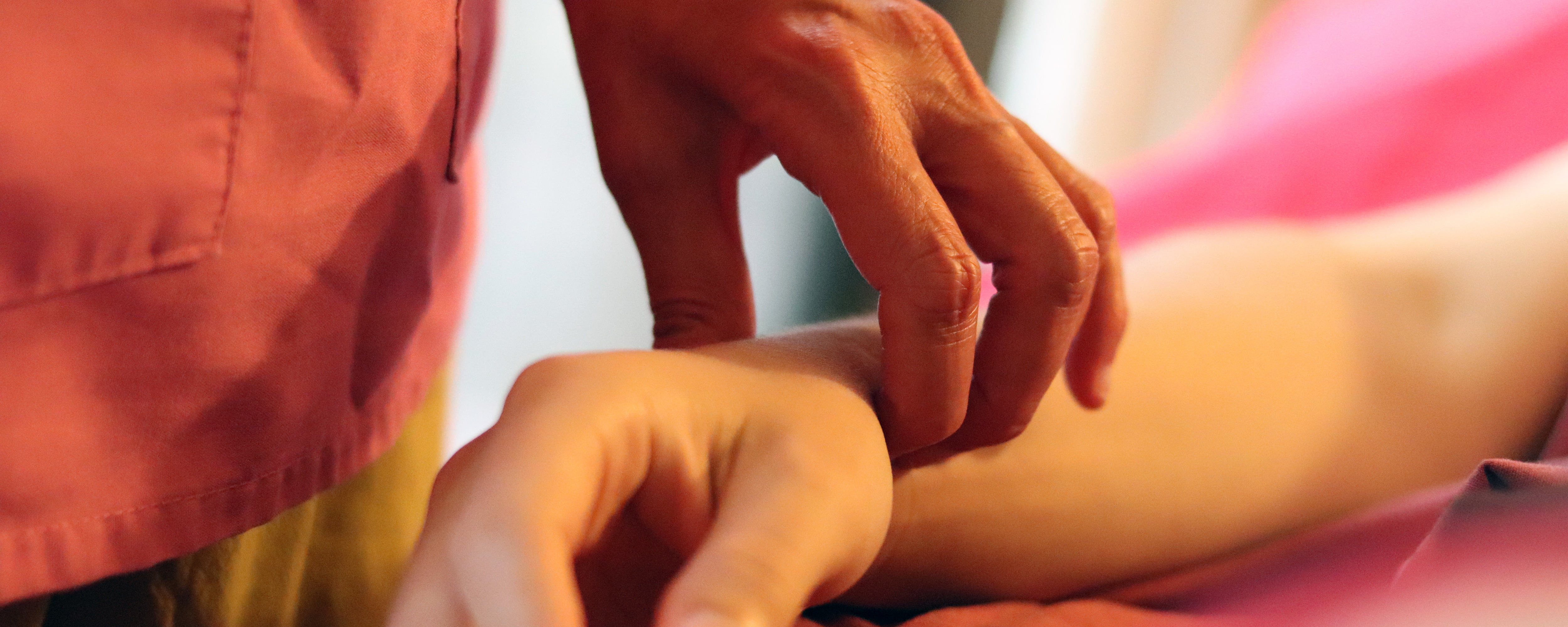Photo Credit: Aryil Bechtel
Women’s Health: Acupuncture and Pelvic Pain
Acupuncture, originating in China and now practiced widely around the world, is a 3000 year old system of health care. Acupuncture involves the insertion of extremely thin needles into specific points on the body. Selection of the points is based on differential diagnosis using observation of the tongue, pulse qualities and presenting symptoms.
Call for an appointment:
Bethany Bechtel, AP, PhD 352-222-3816
Chronic pelvic pain, viewed according to traditional Chinese medicine, can generally be divided into two main diagnostic categories; “stagnation of qi and blood” and “dampness in the lower burner.” Patients experiencing qi and blood stagnation will feel worse when sitting, better with movement and may have stabbing pain at times. Women’s menstrual blood will be dark and clotty. These patients will tend to have a purple appearance on the tongue and their pulses will have a “tight” quality. Individuals in this category will be treated with points that move qi and blood to relieve symptoms.
Patients with dampness in the lower burner will typically experience a discomfort that has a heavy quality. They might even describe a “bearing down” sensation in the pelvis. These patients will often have cloudy urine, thick vaginal discharge in women, and loose and/or frequent bowel movements. The tongue will be heavily coated and the pulses will have a “slippery” quality. Patients in this category are treated with points that drain dampness and may increase urination output.
Often patients will present with a mixture of dampness and stagnation. In this case treatment protocols are chosen to address both of these imbalances. Either of the above imbalances can be superimposed with the presence of a “hot” or “cold” condition. A hot condition is characterized by a red tongue, dark urine and, in women, yellow vaginal discharge. A cold condition is characterized by light urine and clear or white vaginal discharge in women. Patients with hot symptoms are treated with points that clear heat while patients with cold conditions are treated with warming needles.
What can I expect at my first treatment?
Your acupuncturist will take a detailed and comprehensive health history. You will be asked about any current problems with headaches, sleep, digestion, and elimination including the regularity and frequency of urination and bowel movements. Women will be asked about the regularity of menstrual periods and the details of menstrual flow.
Modern medical diagnoses, including lab work and imaging results, will be considered in light of the traditional Chinese diagnostic system. For example, varicoceles would be a sign of blood stagnation and elevated leucocytes in urine or semen would be a sign of dampness.
Following this interview, your acupuncturist will look at your tongue and palpate your pulses along the radial artery at both wrists.
Is acupuncture painful?
Many people are a little anxious before their first acupuncture treatment and may have some concern about the comfort of needle insertion. Unlike hypodermic needles, acupuncture needles are extremely thin. Patients may experience a small amount of discomfort upon the insertion itself (similar to an insect bite). Following insertion most patients become completely relaxed and many fall asleep on the table. A feeling of heaviness or a tingling dissipating from the needled sites is common but not uncomfortable. This phenomenon is sometimes referred to as a “deqi” sensation.
The majority of acupuncture points used to treat pelvic pain are known as the “command points” below the knee and between the elbow and the wrist, and the “back shu” points located along either side of the spine.
Is there scientific evidence for the effective treatment of pelvic pain using acupuncture?
Several studies demonstrate the effectiveness of acupuncture for treating chronic prostatitis /pelvic pain syndrome (CP/CPPS).
The most recent (March 2016) (Chang SC, Hsu CH, Hsu CK, Yang SS, Chang SJ. The efficacy of acupuncture in managing patients with chronic prostatitis/chronic pelvic pain syndrome: A systemic review and meta-analysis. Neurourol Urodyn. 2016 Jan 6. doi: 10.1002/nau.22958. – See more at: http://www.ichelp.org/is-acupuncture-better-than-standard-pelvic-pain-treatment-research-suggests-potential-edge/#sthash.apYlOj2p.dpuf) involved over 500 patients and found acupuncture to be more effective than standard medical treatment.
Other studies involved 89 patients (Lee et al Am J Med 2008 Jan; 121[1]); and electroacupuncture for 63 patients (Lee et al, Urology 2009 May; 73 (5):1036-41).
A study involving 649 women demonstrated acupuncture’s effectiveness in treating pelvic pain associated with dysmenorrhea (Witt et al, AmJObstet Gynecol 2008, Feb; 198[2]:166) Acupuncture has also been shown to be effective for relieving pregnancy-related pelvic pain. (Ee et al, AmJObstet Gynecol 2008 mar; 198[3]:254-9).
Is there a scientific explanation for the mechanism of acupuncture?
Since the advent of its use outside of China acupuncture has been the subject of much scientific investigation worldwide. Acupuncture has been shown to operate on multiple levels of the central nervous system. Several authors have reviewed neurochemical mechanisms implicated in acupunture’s mechanism of action. These include sympathoinhibitory effect and the release of endogenous opiods such as ß endorphins and a variety of other signaling molecules. (Chang et al, Fertility and Sterility 2002, 78, no. 6, 1149) (Zhao et al, ProgNeurobiol 2008 Aug; 85[4]:355-75), Pyne et al, Rheumatology 2008, 47: 1132-1136) However, a unified scientific explanation of acupuncture remains an ongoing endeavor. We can anticipate, as research continues, the emergence of a more complete scientific understanding of this treatment modality.



